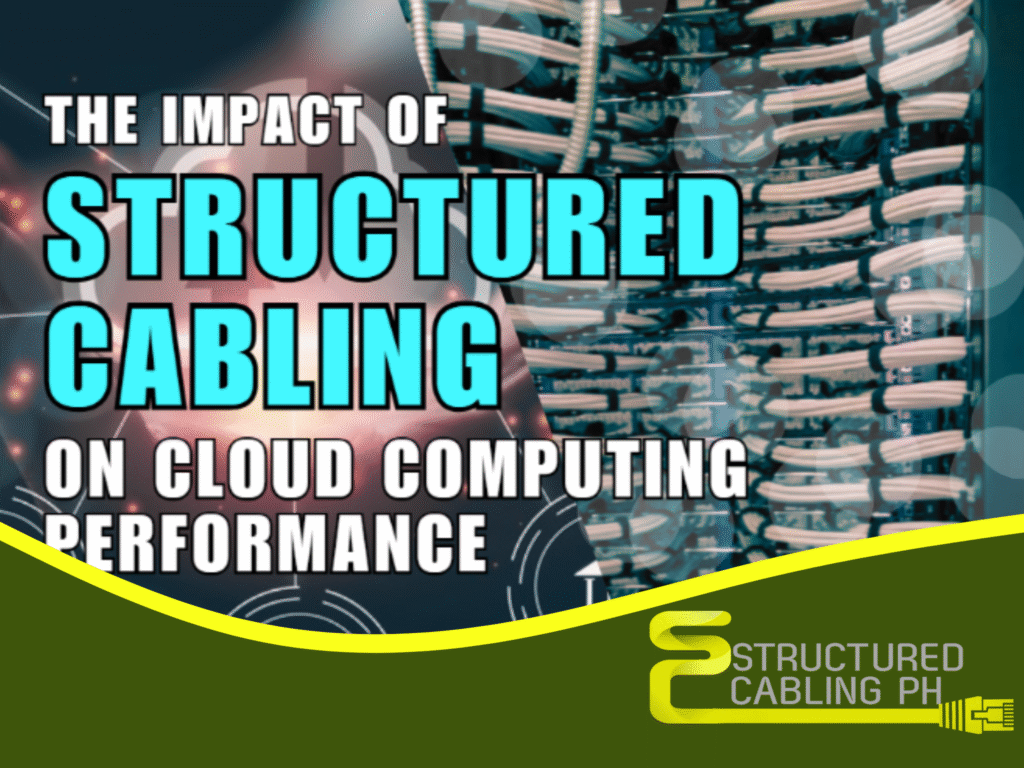Empowering Seamless Cloud Experiences Through Strong Physical Infrastructure
In today’s digital-first landscape, businesses heavily rely on cloud computing to manage data, applications, and collaboration tools. But while the cloud operates in a virtual environment, its performance still depends on something very tangible—your physical network infrastructure. This is where
structured cabling plays a vital role.
Let’s dive into how structured cabling directly influences the performance and reliability of cloud computing systems.
What is Structured Cabling?
Structured cabling refers to a standardized approach to organizing and installing a building’s cabling infrastructure. It includes all the physical cables, ports, and hardware that support data, voice, and video transmission across a network.
Key components of structured cabling include:
- Horizontal cabling
- Backbone cabling
- Patch panels
- Racks and enclosures
- Cable management systems
How Structured Cabling Impacts Cloud Computing
1. Faster Data Transmission
Cloud computing relies on rapid access to off-site servers. A well-designed structured cabling system:
- Reduces signal interference and data packet loss
- Enables higher bandwidth performance (ideal for fiber optic and Cat6/Cat6a systems)
- Supports fast data flow for cloud applications like file sharing, backups, and CRM access
2. Improved Network Reliability
Downtime and connectivity issues can halt productivity. Structured cabling ensures:
- Consistent, high-quality connections across the building
- Reduced chances of human error and physical damage
- Less troubleshooting time when problems occur
3. Optimized Latency and Uptime
In
cloud environments,
low latency and
high uptime are non-negotiable.
- Structured cabling minimizes bottlenecks and delays
- Enhances the speed of real-time services like video conferencing and VoIP
- Supports 24/7 access to cloud platforms with minimal disruption
4. Scalability for Cloud Expansion
As businesses grow, so do their cloud computing needs. A
structured cabling system makes scaling up easier:
- Accommodates new devices and access points without major reworks
- Supports future upgrades such as 10Gbps Ethernet or fiber-to-desktop
- Reduces costs and time associated with system overhauls
5. Better Integration with Hybrid Cloud Models
Many businesses use a
hybrid cloud model, combining on-premise and cloud systems. Structured cabling ensures smooth data transfers between:
- Local servers and cloud servers
- End-user devices and cloud-hosted applications
- Wired and wireless components of your network
Why Businesses Should Invest in Structured Cabling
If you’re experiencing slow cloud access, dropped video calls, or file syncing delays, the problem may not be your internet—it could be your cabling infrastructure.
Here’s what structured cabling brings to the table:
- System Stability – Keeps your operations running smoothly
- Efficiency – Speeds up access to cloud resources
- Future-Readiness – Prepares your network for growing data demands
- Ease of Maintenance – Simplifies upgrades and problem-solving
Final Thoughts
The cloud may live in the digital realm, but its performance is grounded in the physical reality of your network. Structured cabling is the silent hero behind smooth, secure, and scalable cloud computing experiences.
Whether you’re upgrading your current network or building a new infrastructure,
investing in structured cabling is investing in your cloud performance.
Let’s Build Your Cloud-Ready Network
Thinking of upgrading your structured cabling to support your cloud-based operations? Our team can design and implement a cabling system that aligns with your business goals and cloud strategy.
Contact us today to future-proof your network infrastructure.
Contact VastResult now at (02) 8404 0740 or email us at support@vastresult.com.future-proof your network infrastruct


